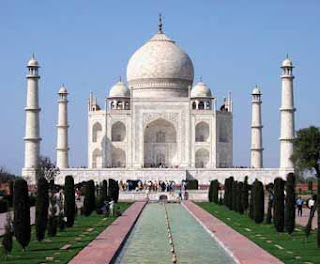 India is our closet neighbour. It is the largest
India is our closet neighbour. It is the largestamong South Asian Countries. In fact, India is
the seventh largest country in the world with
an area of 3,287,590 square kilometres. India
is bounded by the Indian Ocean on the South,
the Arabian Sea on the West, and the Bay of
Bengal on the East. It is bordered by Pakistan to the West; China, Nepal, and Bhutan
to the North; and Bangladesh and Myanmar to the East. India is the world’s second
most populous country after China. Its current population as in 2010 is around 1.15
billion. New Delhi is the capital of India and about 13 million people live in the
capital.
India is a land of ancient civilization. The social, economic, and cultural
configurations of this vast country are the products of a long process of regional
expansion. Indian history begins with the birth of the Indus Valley Civilization and
the coming of the Aryans. During this period Aryan culture flourished in this part of
the world. The fifth century saw the unification of India under Ashoka, and it is in his
time that Buddhism spread in many parts of Asia. In the eighth century, Islam came
to India for the first time and by the eleventh century it had firmly established itself.
It resulted into the formation of the Delhi Sultanate in 1206 by Qutb ud din Aybek.
This was finally succeeded by the Mughal Empire in 1526, under which India once
again achieved a large measure of political unity.
It was in the 17th century that the Europeans came to India. This coincided with the
disintegration of the Mughal Empire, paving the way for regional states. In the
contest for supremacy, the English emerged as the 'victors'. In 1774 Warren Hastings
was appointed the first Governor General of India by the East India Company. In
1876 Queen Victoria was given the title Empress of India by the British parliament
and India came under the British rule completely. They ruled India for nearly two
hundred years. This period was marked by India's struggle for independence.
Through a series of heroic and patriotic movements to restore freedom, India got its
independence in 1947.
The culture of India is one of the oldest and unique in the world. In India, there is
amazing cultural diversity throughout the country. The South, North, and Northeast
have their own distinct cultures and almost every state has carved out its own cultural
distinction. There is hardly any culture in the world that is as varied and unique as
India. There are 17 major languages and 844 dialects used by the people of India.
India is a tourists' delight. The Taj
Mahal, Fatehpur Sikri, The Qutab
Minar and the Red Fort are a few of
the many wonders which attract
people from all over the world.
Kashmir has been described as a
paradise on earth. The country of
mountains, valleys, deserts, rivers
and lakes offer the richness of a mini
world within a single country.
Ooty, Nilgiris and the temples of South India, as also Kajuraho, Ajanta and Ellora
caves are the places one can explore in India.

